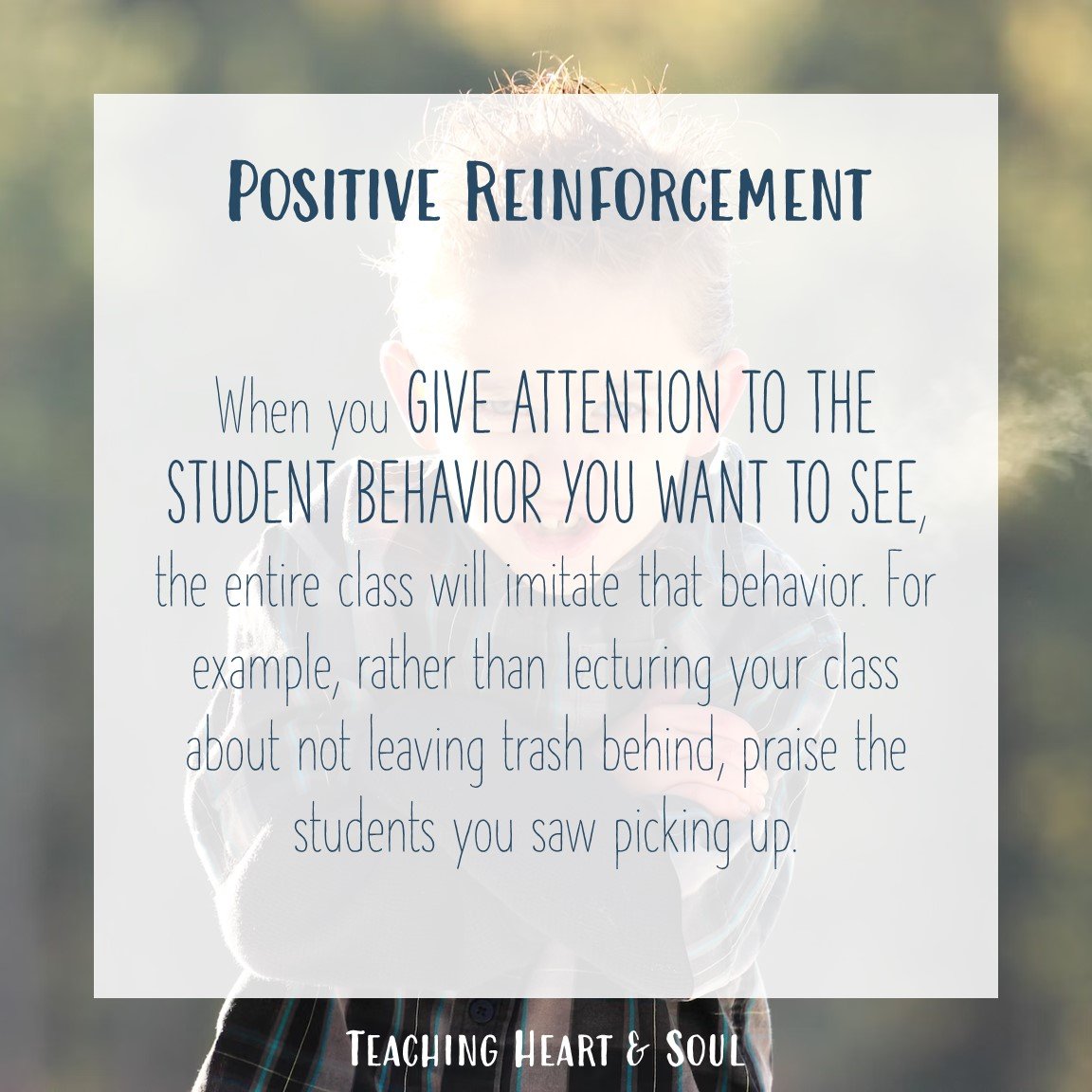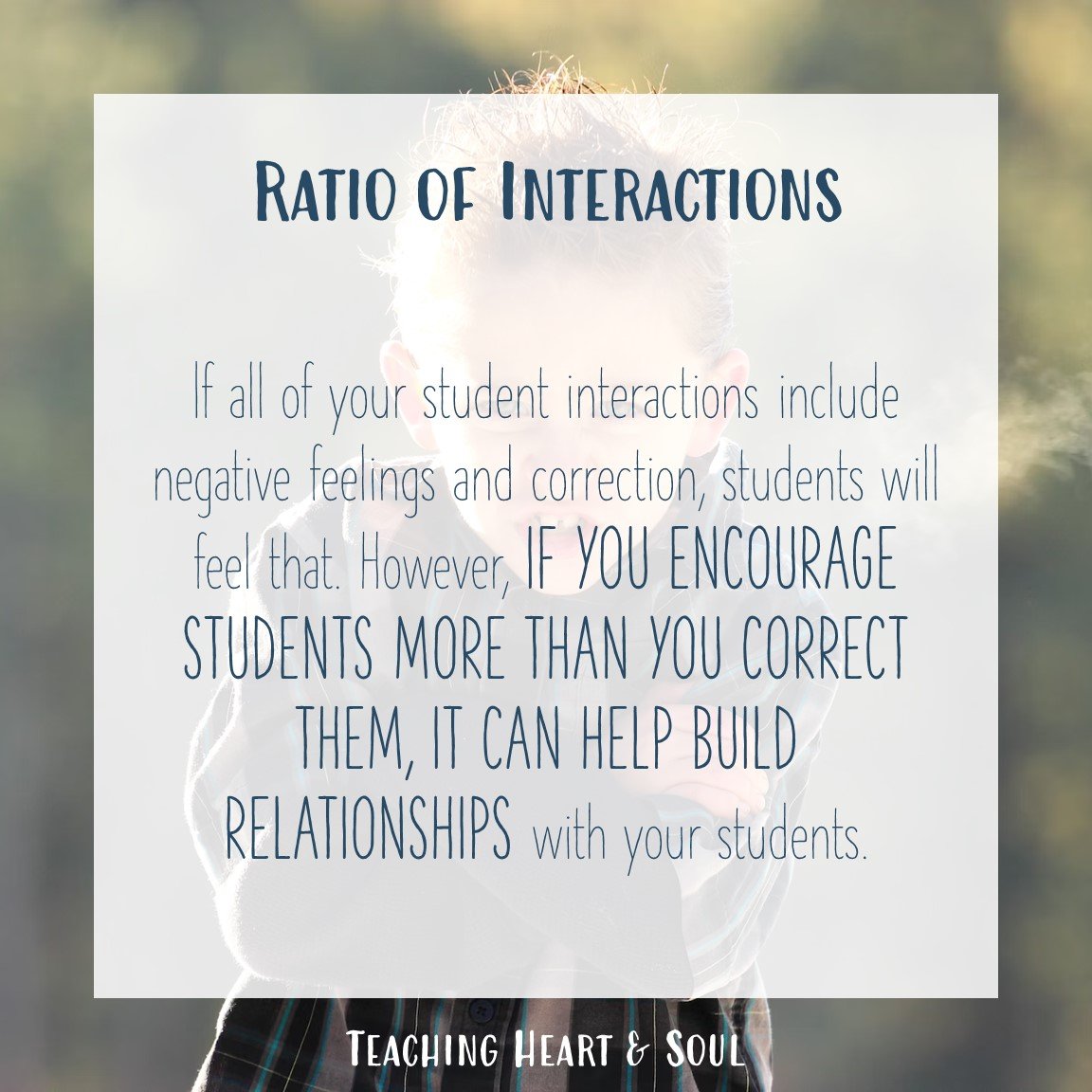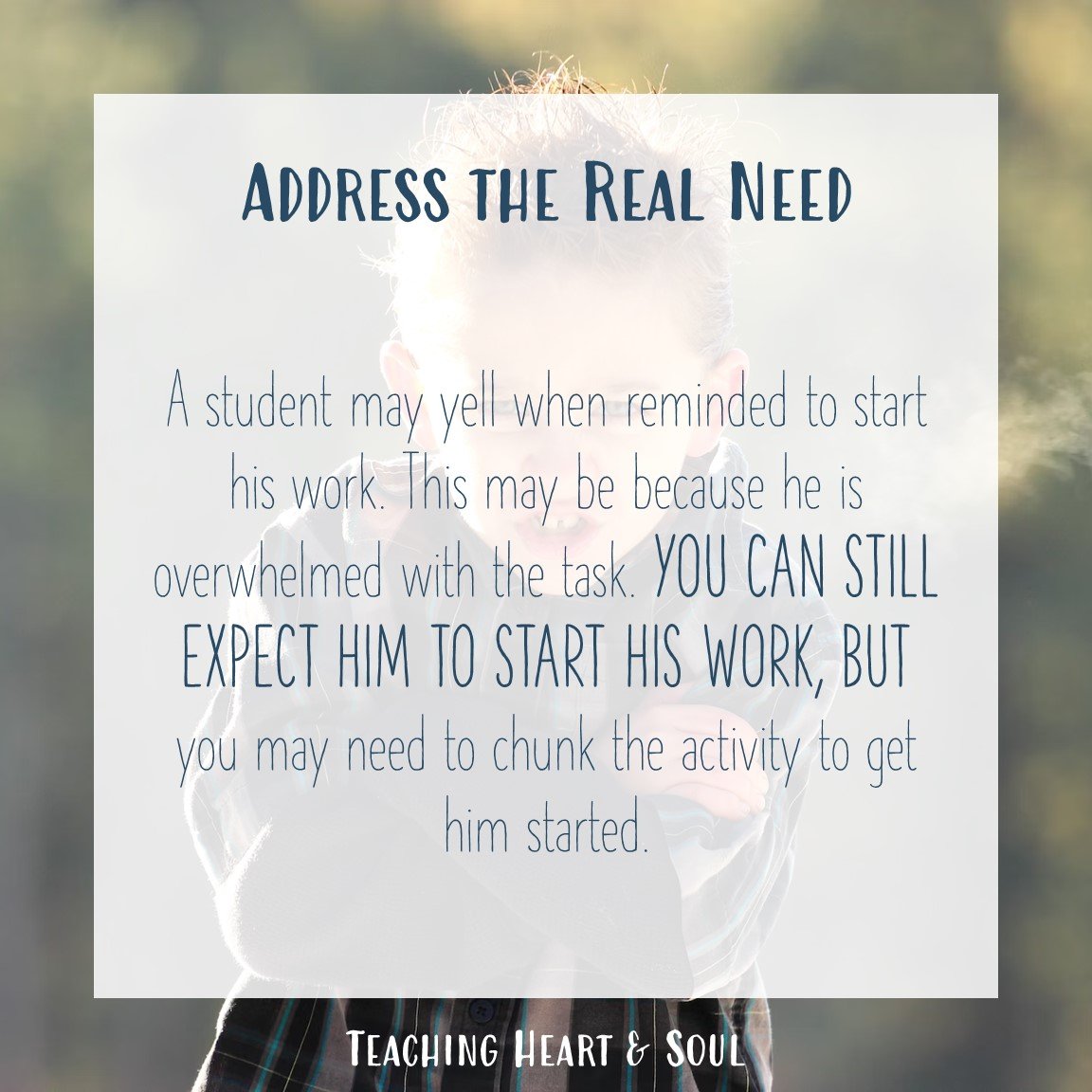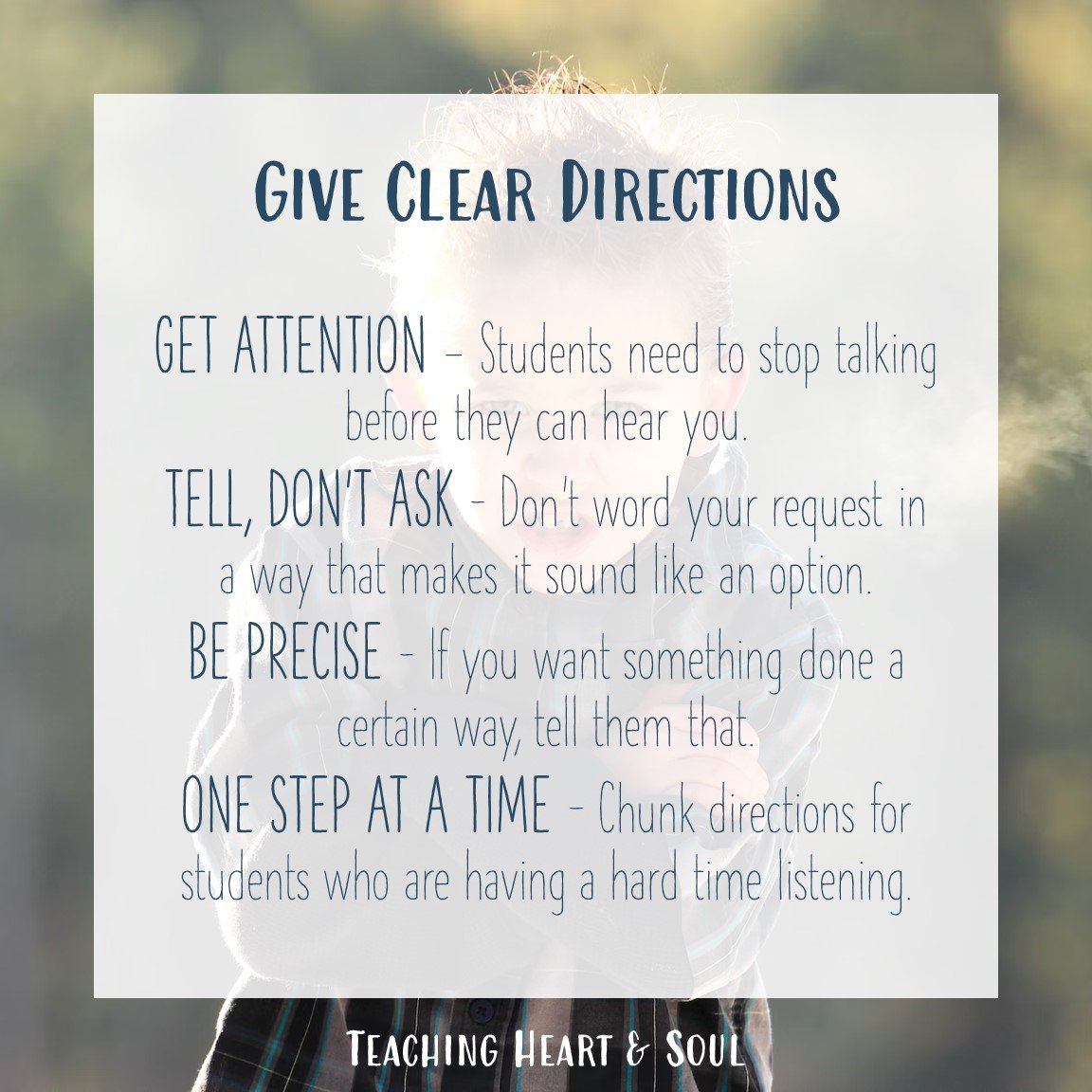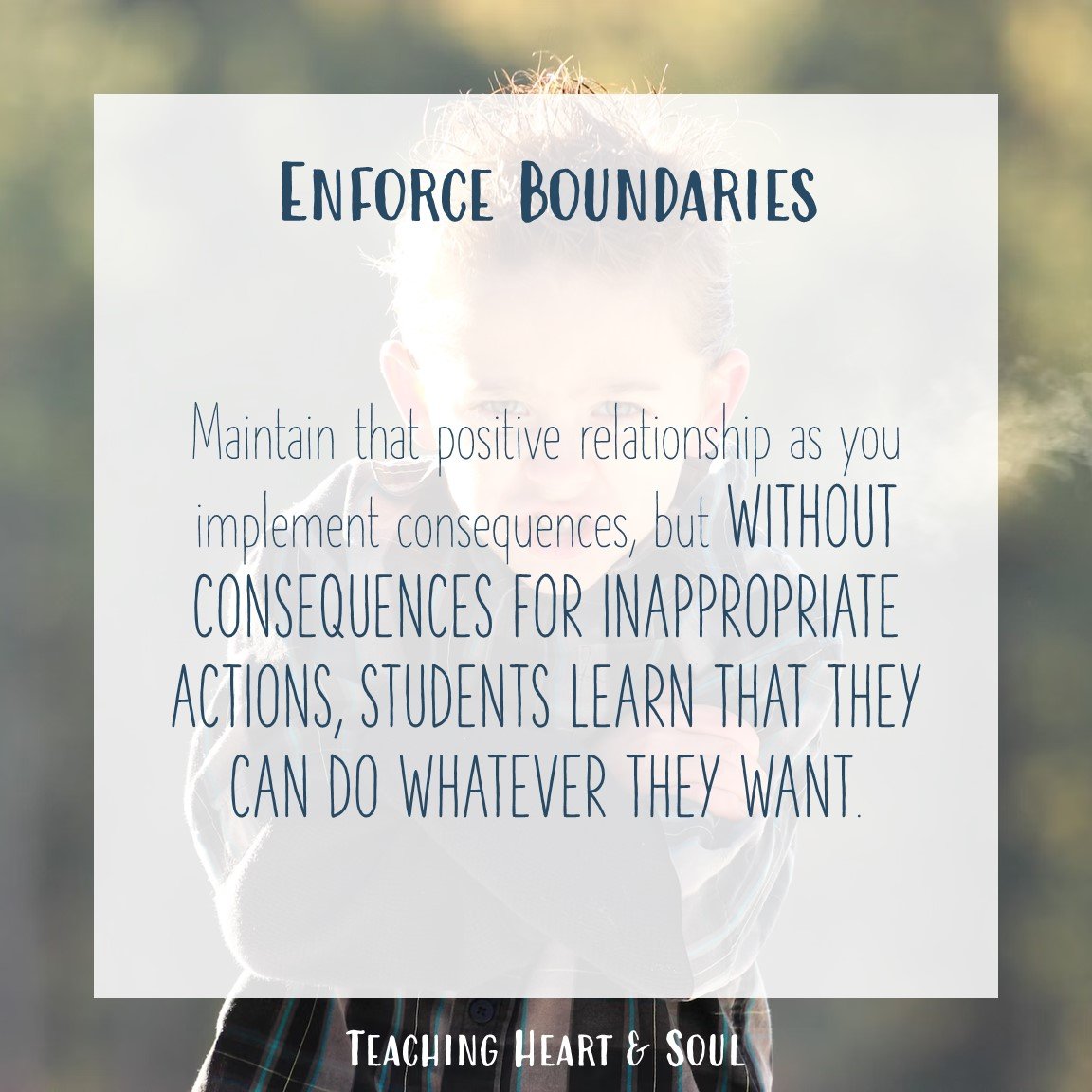Strategies in Classroom Management
It is vital to have a classroom management strategy in place to facilitate a positive classroom environment. New teachers especially need to find classroom management strategies they can implement right away.
(You can read about my struggles as a new teacher and which classroom management strategies I saw work for me right away HERE.)
Disruptive and struggling students benefit from classroom management techniques, but so do other students who don't participate in inappropriate behavior. The entire class benefits from classroom expectations.
While challenging students who show disruptive behavior may seem to need classroom rules the most, all students focus better and have a clear understanding of the expectations when you use strong classroom management strategies. The best classroom management strategies facilitate positive behavior for the entire class, get students engaged, and keep the most challenging students on task.
Contrary to what you might think, effective classroom management strategies do not deal solely with a responsive classroom management plan, but emphasize a positive learning environment and social emotional growth for the whole class.
If you’d like this information in eBook format, CLICK HERE for the FREE download.
Positive Reinforcement
One of the foundational aspects of a strong classroom management strategy is positive reinforcement for positive behavior. Having a positive tone in your classroom makes classroom management easier.
Create a classroom culture of positivity by giving students attention when they're on task or following directions. Oftentimes, students will act out to get the attention of the teacher - even if this attention is negative. However, if students receive ample attention when they're following expectations, they will feel less inclined to seek attention in other ways.
Instead of concentrating on the poor behavior, emphasize the good behavior you see. This can make all the difference in setting up an environment that alleviates behavior issues.
When you give attention to the student behavior you want to see, the entire class will strive to engage more in that type of behavior.
For example, rather than lecturing your class about not leaving trash behind, praise the students you saw picking up after themselves or others. This type of shift keeps a positive tone in your classroom and motivates students to follow the classroom rules because they know they'll be noticed for it.
The Ratio of Positive to Negative Interactions
There are several suggestions on how many positive interactions you should have compared to negative interactions, however, most agree that you should have 5 positive interactions for every negative interaction you have with a student.
Think about it for yourself. How many times can you take criticism or correction without having a balance of positivity? As teachers, our job is to enforce expectations, but this job is more difficult if that's the only thing we're trying to do.
If all of your student interactions include negative feelings and correction, students will feel that. However, if you encourage students more than you correct them, it can help build relationships with your students.
Additionally, positive comments that are directed toward the student's character and effort are more effective than comments that are directed toward achievements because they encourage a growth mindset. ("You worked hard on this!" vs. "You got a perfect score!")
Here are some examples to get you started:
Thanks for participating!
I appreciate hearing your point of view.
I can see you put a lot of effort into your work.
You must be proud of yourself!
Wow, your perseverance is paying off!
I appreciate the way you help your classmates.
You asked some really thoughtful questions.
Your positive attitude is rubbing off on your classmates. Thanks for spreading positivity!
I can see that you applied the feedback I gave you. You've shown a lot of improvement.
Thank you for taking responsibility for yourself.
Building Relationships
Strong relationships with your students is an important part of setting the foundation for a successful classroom management strategy.
Teacher-student relationships are the backbone of why students want to follow the rules in the first place. If you don't build relationships first, there's no buy in for students to care about what you're asking them to do. (Sure, you can implement consequences instead, but is that really the best way to modify classroom behavior?)
There are so many different ways to build relationships with your students. Here are some things you can try:
Greet each child warmly in the morning.
Use their names regularly.
Show interest in their lives.
Listen actively when they speak.
Praise and acknowledge their efforts.
Use humor in your interactions.
Send a positive note home.
Make positive phone calls home.
Share personal stories
Conduct one-on-one check-ins.
Collaborate with students on classroom decisions.
Self-Fulfilling Prophecy
Students live up to our expectations, good or bad.
When we foster positive relationships with our students and expect them to succeed, oftentimes, our students show that they're capable. We give these students attention, encouragement, and opportunities for growth, and they show that our energy is not wasted. They respond positively to our expectations and become more motivated and confident.
On the other hand, we can have low expectations or negative expectations for some students, which can have adverse effects. These expectations can cause students to doubt themselves and underperform.
It's crucial for us to be aware of the powerful influence our beliefs have on our students and strive to foster a positive learning environment that nurtures every child's potential for success.
Get rid of the negative self-fulfilling prophecies you might have toward your students:
Charlie is lazy ... so I won't waste my time giving him supports.
Brenda is untalented ... so I'll dumb down my expectations to push her through.
Pietro is a troublemaker ... so I'll look for misbehavior to correct, rather than positive behavior to encourage.
Lucy has no future. ... so I just need her to have the minimum skills.
Marcus will never be able to X ... so I shouldn't try to make him.
And start changing your attitude:
Charlie can achieve great things with the right support.
Brenda has a unique set of talents that I can encourage.
Pietro has so much energy that I can channel into constructive activities.
Lucy has the potential to rise above her circumstances through education.
Marcus is willing to learn; he just needs the right teaching methods.
Building on this idea, having a classroom mission statement can help students see and achieve your classroom expectations. CLICK HERE for a free template and HERE for worksheets to build a classroom mission statement.
Validation
Kids can hear the word "no" a lot. As teachers, we try to make the best decisions we can with our students, but we don't always see eye-to-eye on what students should or shouldn't do.
Sometimes, students will be more willing to follow our directions when we first validate their desires.
Validate First
Validating the student's point of view fosters a positive relationship.
When you take the time to listen and understand your students and show respect for their preferences, you build trust. Students start to understand that you care about their feelings and views. They begin to see that you take them into account with the decisions you make.
Validating students doesn't mean letting them do what they want. It means hearing them before finding an appropriate alternative.
Check out these ideas:
If a student makes a disruptive comment, you can say: "I understand you have something to share. Let's find an appropriate time to discuss it so we can stay focused on the current topic."
If a student is using electronic devices inappropriately, you can say: "I know technology can be tempting, but it's essential to use it at the right time. We'll have opportunities for device use later."
If a student is reluctant to participate in a group activity, you can say: "It's alright to feel unsure. Let's start by observing, and when you feel comfortable, you can join in."
If a student is teasing a peer, you can say: "I understand you may be joking, but it's essential to be kind to others. How would you feel if someone said that to you?"
If a student is impatient while waiting for their turn, you can say: "I see you're excited to participate. Let's take turns so everyone gets a chance to share."
If a student uses inappropriate language, you can say: "I hear your frustration, but let's find more respectful words to express ourselves."
If a student argues with a classmate, you can say: "I understand you have different opinions. Let's practice active listening and find common ground."
If a student is feeling overwhelmed, you can say: "I understand it can be a lot to handle. Let's break the task into smaller steps to make it more manageable."
Address the Real Need
In some instances, the reason a student may push back on a rule or expectation may stem from a core need that you can still meet while enforcing the expectations you've set.
For example, if a student is frustrated that she can't make a joke in the middle of your instruction, she may need more attention or an outlet for her humor. In this case, you can enforce the expectation that she doesn't interrupt your lesson but give her other opportunities to tell her jokes, such as when students come into the classroom or before dismissal.
Another student may yell when reminded to start his work. This may be because he is overwhelmed with the task. You can still expect him to start his work, but you may need to chunk the activity to get him started.
These responses validate the student for his or her uniqueness while still holding him or her to high standards.
Choice & Autonomy
Imagine for a second that you are one of your students. How many choices do you get to make at school?
Your day is dictated to you from the moment you arrive to the moment you leave school property - and probably before and after, too!
Students have their own opinions, and it can be difficult to hear throughout the day exactly what they're expected to do without having any choice in the matter.
In addition to validating these feelings, it is important to provide students with as much autonomy and decision-making opportunities as is appropriate.
This or That
One of the ways to provide students with choices is to present them with a "this or that" choice - two options that are both appropriate. This gives students some sense of autonomy while maintaining the school or classroom expectations.
This works for assignments as well as behavior issues. It's also a way to phrase potential consequences.
Try these out:
You can read or go to an educational website during this time.
You may sit at your desk or grab a clipboard and move to the floor.
You may do your math homework or review your science notes.
You may create a mind map or a traditional outline.
You may use respectful words or take a moment by yourself to calm down.
You may share now or you may have the item by yourself in 10 minutes.
You can walk to line up or you can move to the end of the line.
Look for the Win/Win
As the teacher, there will be times that you must enforce expectations regardless of how students feel about your rule or what they need to do. However, there are many times you can adjust what you're doing to be more student-centered.
As much as possible, look for the win/win in a situation, rather than simply finding ways to get your students to be more obedient.
Again, students don't have a lot of choices when it comes to school expectations, so try to keep their feelings and preferences in mind throughout the school year.
Here are some things you can try:
Schedule an easy activity after a long test.
Utilize flexible seating during a difficult project.
Allow group work for an assignment.
Offer study sessions before exams.
Implement choice-based reading.
Incorporate technology into lessons.
Host "passion projects" where students can work on projects related to their passions.
Allow students to demonstrate understanding in multiple ways.
Utilize brain breaks.
Allow students to choose their partners when appropriate.
Establish a classroom suggestion box for ideas and feedback.
Clear Directions
An important part of classroom management is to ensure that students understand what is expected of them. Good behavior can't be achieved if students don't know what they need to do. There are a few ways to ensure that you are giving clear directions.
Get Attention
First, make sure you have your students' attention. Students need to stop talking before they can hear you. Allowing students to remain distracted with what they were doing will not allow them to hear what you have to say.
Tell, Don't Ask
If you need a student to do something, don't ask them.
Too often, teachers word their requests in a way that makes it an option for the child.
It's time to put that away, okay?
Will you clean up your area?
Instead, you can ask for a response by asking if the student understood or if they heard you. You can also prompt students for a "Yes Ma'am" or "Yes Sir" to ensure they heard you.
It's time to put that away. Did you hear me?
Please put your artwork in your backpack. Did you understand what I said?
Move to the back of the line. Yes ma'am?
Be Precise
If you want students to do something a specific way, you need to tell them this.
Consider the difference between "Please turn in your work," and "When you are finished, make sure your name is on your paper and line up silently at my desk to hand your work directly to me." In the first example, there is a lot of wiggle room for chaos, but with the second phrasing, students know exactly what is expected of them.
One Step at a Time
If a child is having a hard time listening to directions, it may be best to give them one step at a time. This is especially true for younger students or those who have behavioral issues or are cognitively delayed.
Instead of saying, "Put your pencils in your pencil pouch, and then put that in your backpack," it can be easier to process requests like "Put the pencils in your pencil pouch," and "Put your pencil pouch in your backpack" separately.
Wait Time
Wait time is especially important with younger students.
Give students a few seconds (3-5) to comply with your directions, rather than expecting students to instantly move when you say "go."
Time to Process
Students need time to process what you said. If they're working on another activity or in the middle of reading, it can take a moment to transition from that task to processing the instructions you just gave.
Give students this time to disengage from what they were doing and process this information.
Time to Make the Right Choice
Some say that delayed obedience is disobedience, but I say that delayed obedience often comes from students overriding their natural desire to disobey and do what they want.
Give students the few extra seconds it might take for them to choose to make the right decision.
Enforcing Boundaries
In the end, after you've built up positive relationships with your students, validated their desires, given them autonomy with choices, made sure your directions are clear, and given them wait time, they won't always make the right choice.
It's important that you enforce boundaries when students break the classroom rules.
Maintain that positive relationship as you implement consequences, but without consequences for inappropriate actions, students learn that they can do whatever they want.
Natural Consequences
The first type of consequence is a natural consequence.
This type of consequence is easy for teachers because all you have to do is sit back and watch things play out.
For example:
If a student does not charge their device, they may have to write out their essay, rather than being able to type it.
If a student leaves their lunchbox behind, they'll miss out on socializing as they return to the classroom to get it during lunchtime.
You should be careful with which natural consequences you allow to play out. Students need to be protected from some dangerous consequences (like falling from the top of the monkey bars when walking on top of them) and some consequences might be welcome (like skipping an assignment because the student forgot supplies).
Logical Consequences
If there are no natural consequences for a student's misbehavior, you should step in and implement logical consequences.
Logical consequences fit the behavior.
Giving a student a time out because they forgot their homework doesn't make sense, however, administering a time out when a student is unable to play appropriately with other children does.
Other examples of logical consequences are:
Students may not be allowed to go on educational websites with the rest of the class until they complete their missing work.
A student who leaves behind trash must throw away all of the trash in the classroom or playground area.
When a student isn't being respectful of others during a group project, they must create the entire project on their own.
Restorative Consequences
Restorative consequences focus less on the individual student who misbehaved, and more on their relationship with the student they wronged or correcting the result of the behavior.
Rather than simply having consequences for their actions, through restorative consequences, students must work to restore their relationship with the other student or undo the wrong they committed.
For example:
A student should return or replace a ruined item.
A student should write an apology letter, affirming another student that they teased.
A student should clean up the restroom that they vandalized. (This could also be considered a logical consequence.)
Planned Ignoring
In some cases, consequences might not be necessary. Instead, ignoring the behavior might be the best option.
Planned ignoring works best with harmless, attention-seeking behaviors. These behaviors might be tantrums, whining, or comments meant to provoke.
During planned ignoring, the teacher does not give any attention to the student for the behavior, as attention (positive or negative) can reinforce the behavior.
Read more about planned ignoring HERE. On that page, you can find an interactive story to practice your planned ignoring skills!
Conclusion
In conclusion, effective classroom management is a vital aspect of a teacher's role. Many teachers benefit from using these classroom management techniques to address disruptive and struggling students, as well as encouraging active participation from other students. By establishing clear expectations, an effective teacher sets the foundation for behavioral performance and academic effort in the classroom.
A student-centered teaching style, combined with important classroom management strategies, can yield positive outcomes in the learning process. Providing student breaks, offering choices, and validating students' preferences can create a more engaging classroom. Building strong relationships with students is pivotal in motivating them to follow rules and expectations. By addressing the unique needs of each student, a teacher's classroom management style can adapt to foster growth and learning.
Classroom management techniques that focus on positive reinforcement, logical consequences, and restorative measures offer constructive approaches to address inappropriate student behavior. Some students may struggle with poor interpersonal skills, and these students can particularly benefit from the positive aspects of these classroom management techniques. Encouraging self-reflective practices empower students to take ownership of their own learning and behavior.
These universal classroom management strategies help teachers create a positive classroom environment that is not based on set rules, but on student relationships and encouragement.
If you loved this blog and want to reference it in a different format, download the FREE eBook HERE.
More Resources
CLICK HERE to learn more about planned ignoring.
CLICK HERE to find out about how to write a SMART goal for classroom management.
CLICK HERE for a classroom mission statement template, and CLICK HERE for mission statement worksheets.
CLICK HERE to read my story about how I learned which classroom management strategies worked for me.
CLICK HERE to download the FREE classroom management strategies eBook.

